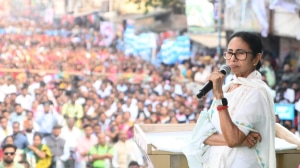In a statement after the talks, India’s Commerce and Industry Ministry said the talks ended with a “broad understanding” of the next steps towards a bilateral trade agreement both countries aim to sign by Fall. It, however, did not indicate whether there would be any relaxation on President Donald Trump’s decision to impose reciprocal tariffs from April 2 as was expected by the Indian industry.

“Both sides, through four days of discussions in New Delhi, have broadly agreed on the next steps towards a mutually beneficial, multi-sector BTA, aiming to finalise its first tranche by fall 2025. Sectoral expert-level engagements under the BTA will begin virtually in the coming weeks, paving the way for an early in-person negotiating round,” the ministry said.
Trade experts said the Terms of Reference are usually set before negotiations begin and are often decided at a political level, as seen in the ongoing India-European Union trade talks. Previously, contentious issues such as market access in agriculture and data localisation had stalled efforts for an India-US trade agreement.
Without sharing specifics, the Commerce and Industry Ministry said both sides had a “productive exchange” on strengthening bilateral cooperation in “priority areas, including increasing market access, reducing tariff and non-tariff barriers, and deepening supply chain integration in a mutually beneficial manner.”
Uncertainty over reciprocal tariffs remains, despite industry optimism following the announcement of trade talks. On Saturday, Trump said discussions between India and the US were progressing well. Last week, he hinted at a softer stance, stating that “a lot of countries” would receive exemptions on April 2.
At a White House press briefing today, Trump said, “India is one of the highest tariffing nations in the world… It’s brutal. They’re very smart. He (Modi) is a very smart man and a great friend of mine. We had very good talks. I think it’s going to work out very well between India and our country.”
Story continues below this ad
The four-day meeting followed Commerce and Industry Minister Piyush Goyal’s visit to Washington DC in early March, where he met US Trade Representative Jamieson Greer and Commerce Secretary Howard Lutnick.
“This week’s talks served as an icebreaker, with substantive negotiations expected to begin later. Despite the discussions, the US continues to impose additional tariffs on Indian exports such as steel, aluminium, automobiles, and auto parts. Also, it is not clear if the talks are only about India making unilateral tariff concessions or if the US will also cut its tariffs. While both sides engage in dialogue, Washington’s hardline trade stance suggests a disparity in bargaining power,” former trade officer and head of think tank GTRI, Ajay Srivastava, said.
The Indian Express reported on Friday that US negotiators focused on market access—an area of US interest—but did not disclose plans for reciprocal tariffs when questioned by Indian negotiators. This has raised concerns among Indian officials that the US could use reciprocal tariffs as leverage to push for an early goods deal.
During the talks, US demands centred on greater market access, particularly for automobiles, whisky, and certain agricultural products. Indian negotiators, meanwhile, sought improved access for labour-intensive sectors such as textiles and leather.
Story continues below this ad
On digital trade, the US is pressing for greater data access, challenging India’s strict data localisation rules, which require Indian data to be stored domestically. During Trump’s first term, disputes over data localisation were a major source of friction between the two nations.
Trump has already imposed 25 per cent tariffs on steel and aluminium and is set to impose tariffs on automobiles and auto parts from April 3. Indian steel exporters have told the government that US tariffs have affected nearly $5 billion worth of exports, while auto-component exporters fear selective concessions could threaten India’s $7 billion exports to the US.
But the government was hopeful. “The successful conclusion of the discussions reflects progress in efforts to expand India-US bilateral trade and investment relations to promote prosperity, security, and innovation in both countries. These steps aim to unlock new opportunities for businesses, drive bilateral economic integration, and reinforce the economic partnership between India and the United States,” the Commerce and Industry Ministry’s statement said.

































